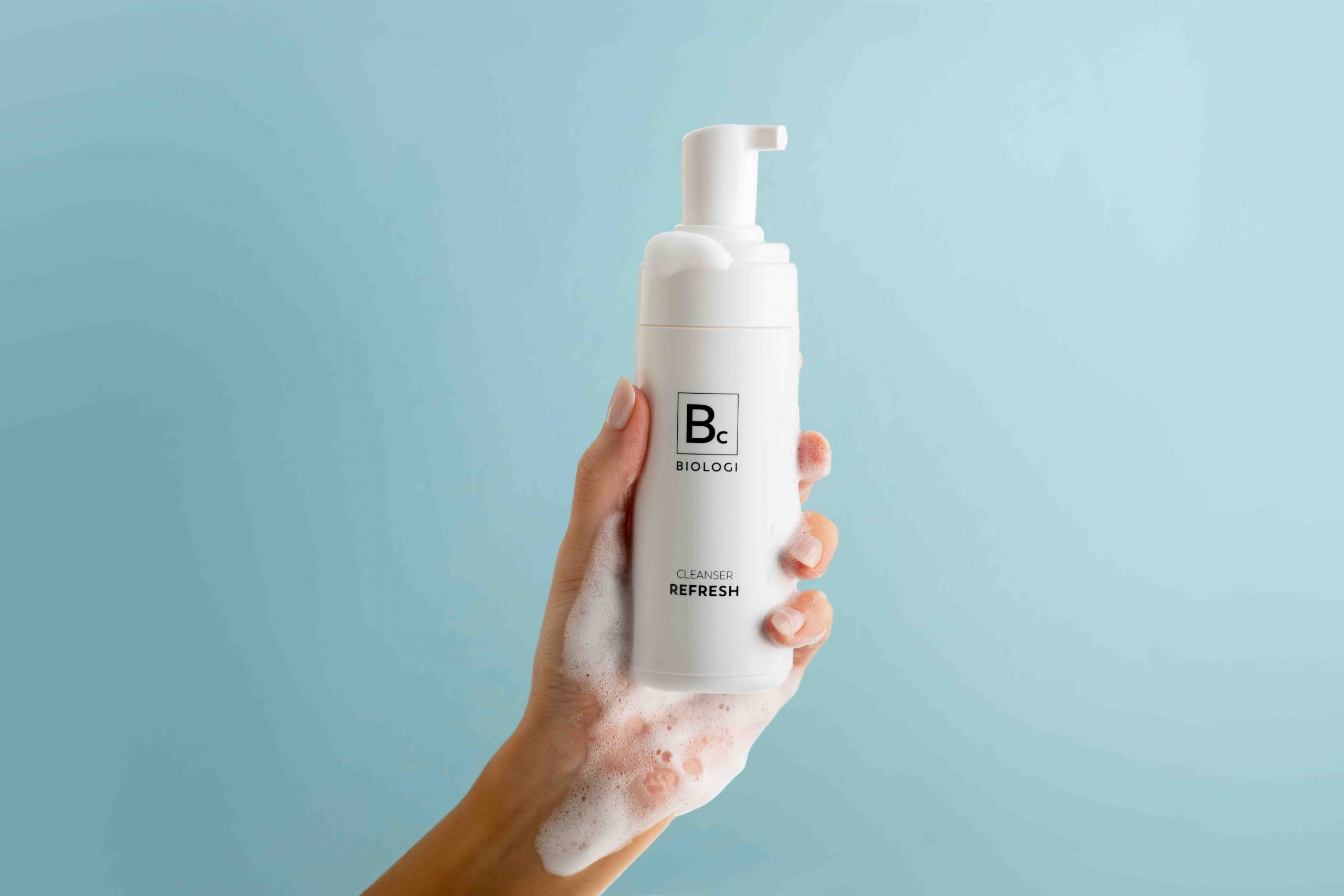
The Truth About Cleansing
Clean up your act
By Guest Styler | 26th August 2020Most people would argue that cleansing your skin is pretty straightforward, right? Well, not quite. According to Lucy Macdougald, Biologi’s Dermal Specialist, there’s a lot more to cleansing than meets the eye. In fact, the way you cleanse can do a lot more for your skin than you realise (as long as you do it right). Lucy busted some common cleansing myths and gave us the low down on all the cleansing know how.
Tight Skin Is Never A Good Thing
If you grew up in the 90s and 00s, chances are you’re too familiar with that tight skin feeling, thanks to some cleansing culprits that were all the rage in those days. However, gone are the days when tight skin meant your face was thoroughly cleansed. In fact, I’ll clarify: tight skin does mean it’s cleansed, but unfortunately a little too much. Tight skin means you’re likely using the wrong cleanser – one that has completely stripped your skin of its natural oils. Skin needs these natural oils as they act like a barrier between our skin and the outside world, protecting our systems from bacteria, dirt, and other residue that can wreak havoc on our skin. It also needs these oils to control the skins ability to regulate the oil (if it’s stripped, your skin will accommodate by producing more oil). Skin that’s too oily can result in various skin issues like breakouts, blackheads or acne. Ideally, you want a cleanser that will thoroughly cleanse but not strip the surface of the skin.
Scalding Hot Water Is A Big No
Most people would assume that to get a proper cleanse you need really hot water, right? Well, the short answer is no. In fact, hot showers, baths or hot water in general is not so great for the skin. This is because hot water has the tendency to dry out the skin and, in colder months, this can only exacerbate any skin issues. Excessive hot water usage can disrupt the skin’s natural balance because it actually prevents the skin from locking in any moisture. It also damages the keratin cells that are located in the epidermis, which strips the skin’s surface of the natural oils it needs to regenerate.
Be Careful Of How You Double Cleanse
Double cleansing is a big trend at the moment and for good reason – it can ensure any excess makeup, dirt or residue is entirely off your face. However, double cleansing can also be done the wrong way because it risks stripping your skin. Rather than double cleansing using harsh stripping products, consider using a microfibre cloth first to remove your make up (we recommend Biologi’s new Microfibre Cloths), followed by a gentle cleanser like Biologi’s Bc Refresh Cleanser. Harnessing the untouched power of soapberry extract, Biologi has achieved what was previously thought impossible and created a cleanser free from synthetic surfactants and foaming agents. Biologi’s Bc Refresh Cleanser not only cleanses the skin, but because it is fully active, it works like a serum would and offers hydration, antioxidant protection and repairs the skin cells deep within the dermal layers.

Exfoliate, But Not Too Often
Exfoliation is an important part of the cleansing routine and whilst everyone’s skin is different, as a general rule, once a week for exfoliation is enough. Exfoliation is beneficial because it can rid the surface of any excess build up or dead skin cells but doing it more than once a week can again risk stripping the skin. We recommend using a gentle enzyme exfoliant because it will gently get rid of the dead skin cells attached to the upper layer of the skin without damaging the healthy skin underneath.
Ditch The Dispolable Face Wipes
Yes, disposable face wipes can be convenient, but they actually fail to adequately clean your face and are usually full of harsh chemicals. On top of that, they can cause damage to the environment when they end up in landfill, taking hundreds of years to decompose. Switch out your disposable face wipes for microfibre cloths instead, which are reusable, will cleanse better and are just as convenient.





